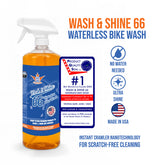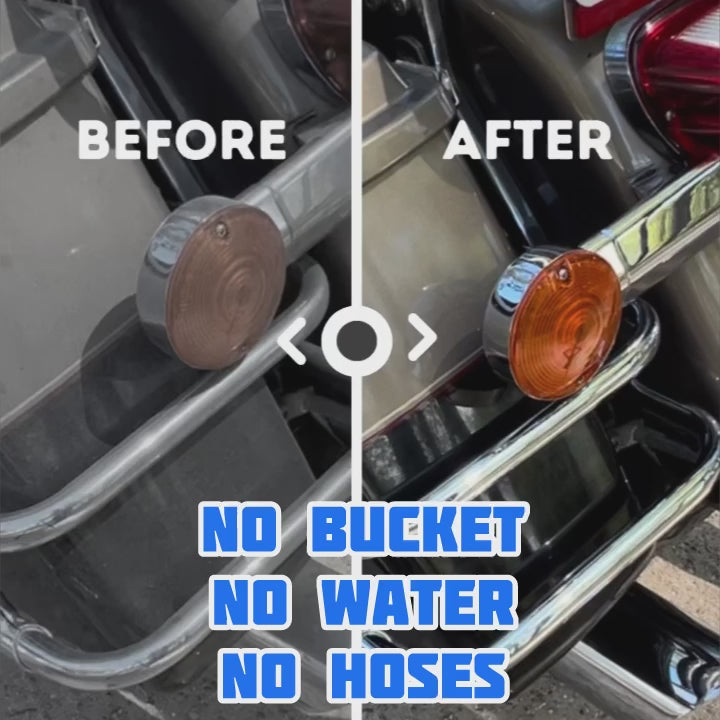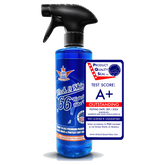What Is a Detailing Coating? Complete Overview
Did you know that some detailing coatings can keep surfaces protected for up to seven years? This advanced technology has changed the way people care for cars, motorcycles, and even home fixtures. Choosing the right coating means surfaces stay looking sharp and are shielded against harsh weather, scratches, and chemical damage. Understanding the science and truth behind these coatings helps you make informed choices about protection, cost, and durability for every need.
Key Takeaways
| Point | Details |
|---|---|
| Detailing Coatings | These protective layers, primarily made of SiO₂ and TiO₂, enhance surface durability and appearance against environmental damage. |
| Types of Coatings | Different types, including ceramic, polymer, fluoropolymer, and graphene, cater to specific surface protection needs. |
| Application Versatility | Detailing coatings protect various surfaces beyond vehicles, including homes and industrial equipment. |
| Cost and Maintenance | While initial costs can be high, proper maintenance will maximize the longevity and effectiveness of the coatings. |
Table of Contents
- Defining Detailing Coating And Common Myths
- Different Types Of Detailing Coatings Explained
- How Detailing Coatings Work On Surfaces
- Applications For Cars, Homes, And Motorcycles
- Benefits, Costs, And Potential Drawbacks
Defining Detailing Coating and Common Myths
A detailing coating is a specialized protective layer applied to surfaces like automotive paint, glass, or metal to provide enhanced protection and visual appeal. According to research from leading automotive detailing sources, these advanced nanotechnology-based liquid polymers chemically bond to surfaces, creating a robust shield against environmental contaminants and wear.
The primary composition typically involves silicon dioxide (SiO₂) and sometimes titanium dioxide (TiO₂), which create a hard, hydrophobic protective layer. As ceramic coating insights reveal, these coatings offer significant benefits:
- Protection from UV rays
- Resistance to water spots
- Defense against chemical stains
- Enhanced surface gloss and appearance
However, several myths persist about detailing coatings that need clarification. Contrary to popular belief, these coatings are not invincible. They do not make surfaces completely scratch-proof or eliminate all potential damage. Proper maintenance and realistic expectations are crucial. Professional application and understanding the coating’s limitations are key to maximizing its effectiveness and longevity, which typically ranges from one to five years depending on product quality and environmental conditions.
Different Types of Detailing Coatings Explained
Detailing coatings come in several specialized varieties, each designed to address specific surface protection needs. Ceramic coatings represent the most popular and advanced option, utilizing nanotechnology to create a durable protective layer on automotive surfaces, metals, and glass. For those seeking comprehensive surface protection, understanding polymer coating technologies can provide valuable insights into these advanced protective solutions.
The primary types of detailing coatings include:
- Ceramic Coatings: Highly durable, offering maximum protection against UV rays, chemical stains, and environmental contaminants
- Polymer Coatings: Flexible protective layers with excellent adhesion and resistance to wear
- Fluoropolymer Coatings: Specialized coatings known for exceptional chemical resistance and non-stick properties
- Graphene Coatings: Emerging technology offering superior heat resistance and durability
Each coating type has unique characteristics that make it suitable for different applications. Ceramic coatings excel in automotive and marine environments, while fluoropolymer coatings are ideal for industrial and technical surfaces. The choice depends on specific requirements like durability, chemical resistance, aesthetic enhancement, and the particular surface being protected. Professional application and understanding the specific properties of each coating type are crucial for achieving optimal protection and performance.
Here’s a comparison of the main types of detailing coatings:
| Coating Type | Key Benefits | Typical Uses |
|---|---|---|
| Ceramic | High durability UV protection Glossy finish |
Cars Marine Motorcycles |
| Polymer | Flexible layer Resists wear Good adhesion |
Cars Plastic surfaces |
| Fluoropolymer | Chemical resistance Non-stick properties |
Industrial Technical surfaces |
| Graphene | Superior heat resistance Extreme durability |
Automotive Next-gen protection |
How Detailing Coatings Work on Surfaces
Detailing coatings operate through an advanced molecular bonding process that transforms surface protection. According to automotive detailing research, these coatings chemically integrate with the surface, creating a nano-ceramic layer that goes far beyond traditional protective methods. When applied, hydrophobic coating technologies create a microscopic barrier that fundamentally changes how surfaces interact with environmental contaminants.
The scientific mechanism involves several key steps:
- Chemical Bonding: Coatings like silicon dioxide-based ceramics chemically integrate with the surface’s molecular structure
- Microscopic Filling: Tiny pores and imperfections are filled, creating a smooth, uniform protective layer
- Molecular Restructuring: The coating alters the surface’s molecular texture, enhancing resistance to dirt, water, and chemical stains
- Hydrophobic Barrier: Creates a water-repellent surface that prevents contaminants from adhering
This molecular-level protection means detailing coatings function differently from traditional waxes or sealants. They become an integral part of the surface rather than sitting on top, providing superior durability and protection. The coating’s ability to smooth molecular surface texture prevents contaminants from easily adhering, offering long-lasting protection against UV rays, water spots, environmental pollutants, and minor abrasions. Professional application ensures optimal molecular bonding and maximum protective performance.
Applications for Cars, Homes, and Motorcycles
Detailing coatings offer versatile protection across multiple surfaces and industries, extending far beyond traditional automotive applications. While cars remain the most common use, these advanced protective technologies have found innovative applications in residential, industrial, and recreational environments. Motorcycle detailing experts recognize the crucial role these coatings play in preserving and enhancing various surfaces.
Key application areas include:
- Automotive: Protecting vehicle paint, wheels, glass, and trim from environmental damage
- Motorcycles: Shielding paint, chrome, plastic, exhausts, and glass from UV radiation, corrosion, and road contaminants
- Home Surfaces: Protecting kitchen appliances, bathroom fixtures, architectural panels, and outdoor furniture
- Industrial Equipment: Providing corrosion resistance and chemical protection for machinery and metal surfaces
For motorcycles specifically, ceramic coatings offer exceptional benefits. They provide high-temperature resistance up to 1100°F, create a glossy finish, and can last up to three years with proper maintenance. In home and industrial settings, these coatings transform ordinary surfaces by adding a protective layer that resists chemical attacks, physical damage, and environmental wear. The versatility of detailing coatings makes them an essential solution for preservation and aesthetic enhancement across diverse applications.
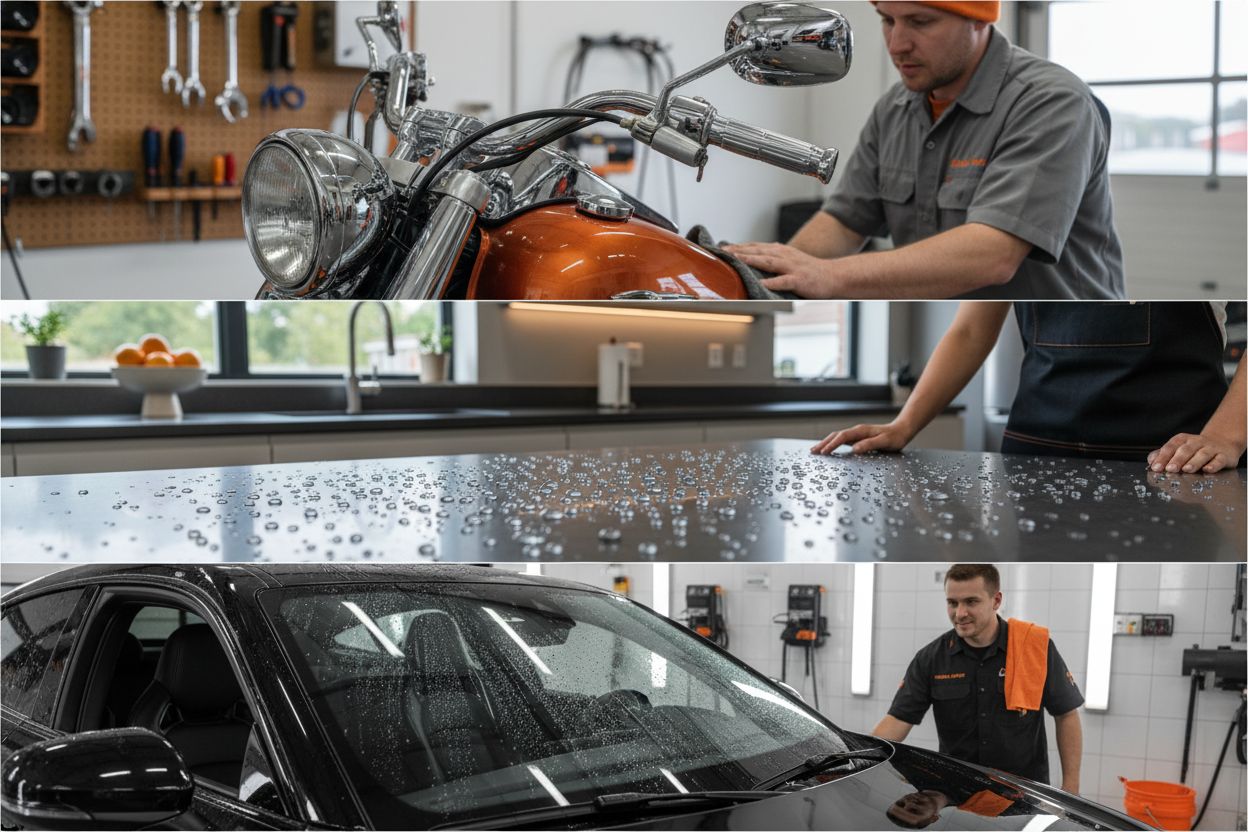
Benefits, Costs, and Potential Drawbacks
Detailing coatings represent a sophisticated approach to surface protection, offering significant advantages alongside notable considerations for potential users. Understanding graphene ceramic coating technologies helps consumers make informed decisions about their investment in surface protection.
Key benefits and considerations include:
- Protection: Enhanced resistance to UV rays, chemical stains, and environmental contaminants
- Aesthetic Improvement: Creates a glossy, showroom-like finish
- Longevity: Provides protection for 1-7 years depending on coating quality
- Minor Scratch Resistance: Offers limited protection against light abrasions
Cost remains a significant factor in ceramic coating decisions. Professional applications typically range from $695 to $2,000, with additional expenses for paint correction ($300-$800) and surface preparation ($200-$500). While the upfront investment is substantial, the long-term protection can offset initial costs. However, it’s crucial to understand that these coatings are not invincible—they won’t prevent rock chips or deep scratches. Proper maintenance and realistic expectations are key to maximizing the benefits of detailing coatings. DIY options exist for more budget-conscious consumers, but professional application often yields superior results and longer-lasting protection.
Bring Professional-Grade Detailing Coating into Your Own Garage
Are you tired of watching your car or motorcycle lose its shine and protective barrier to harsh weather, UV rays, and daily use? After learning about the real science behind detailing coating and common myths, it is clear that proper surface protection is no luxury. It is a necessity for anyone who wants lasting beauty and defense for their vehicles. Many people struggle with costly professional services or disappointing DIY results that simply do not last. That is why you need solutions backed by cutting-edge chemistry and real-world performance.
Discover the power of trusted, industry-leading coatings built for every need. Explore our Motorcycle Cleaners & Coatings to see how easy it is to protect every ride with minimal maintenance and lasting results.
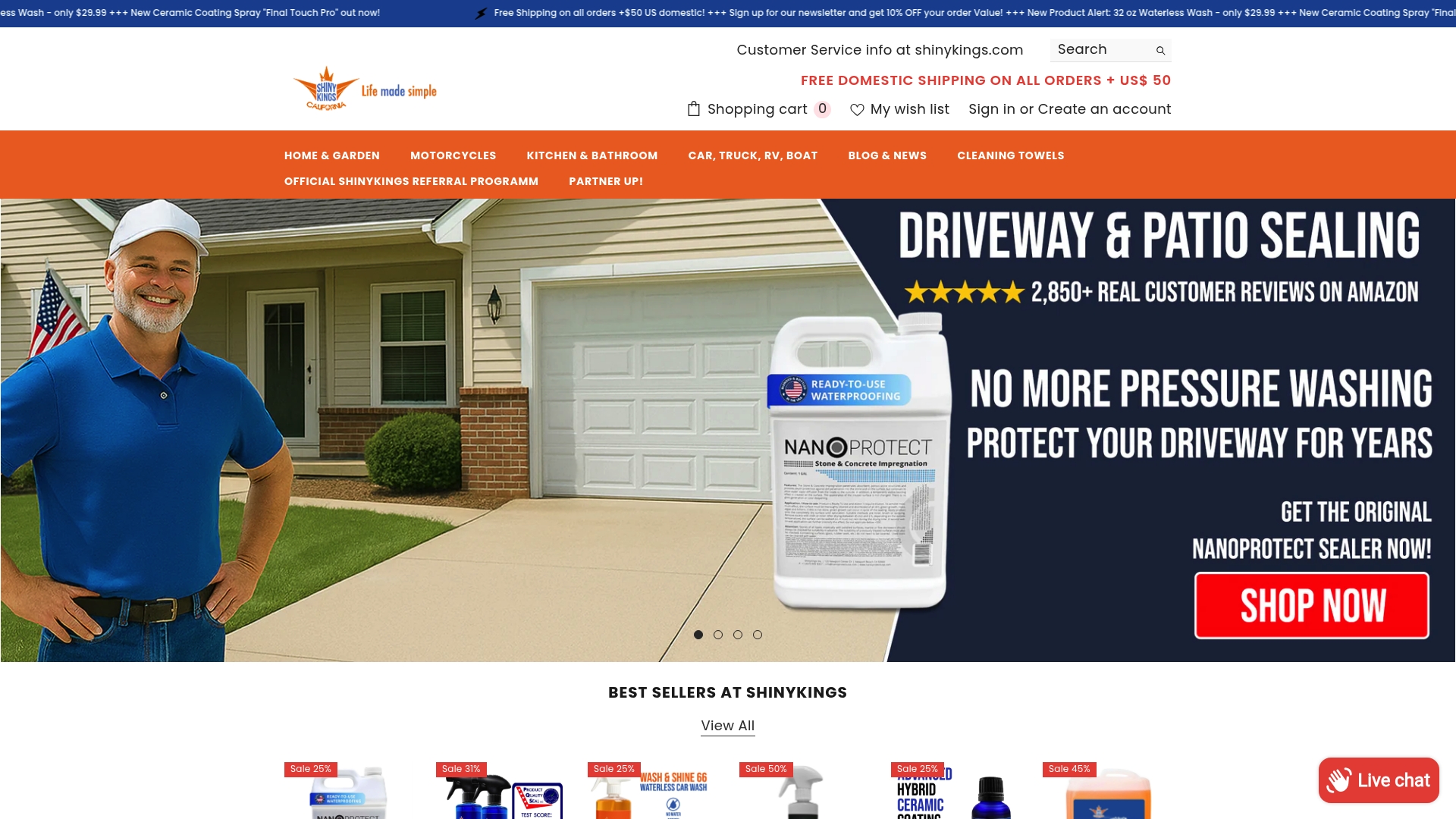
Ready to extend that showroom shine to your driveway, patio, or beyond? Find bestsellers and unique coatings for any surface at ShinyKings Bestsellers or browse our concrete sealers for robust outdoor protection. Trust the source where innovation, durability, and serious surface care meet. Visit ShinyKings today and transform the way you protect what matters most.
Frequently Asked Questions
What is a detailing coating?
A detailing coating is a specialized protective layer applied to surfaces like automotive paint, glass, or metal. It utilizes advanced nanotechnology to chemically bond with surfaces, providing enhanced protection against environmental contaminants and wear.
How long does a detailing coating last?
The longevity of detailing coatings typically ranges from one to five years, depending on the quality of the product and environmental conditions. Proper maintenance can help maximize the coating’s lifespan.
What are the different types of detailing coatings?
The main types of detailing coatings include ceramic coatings, polymer coatings, fluoropolymer coatings, and graphene coatings. Each type offers unique benefits, such as enhanced durability, chemical resistance, and temperature resistance, suitable for various applications.
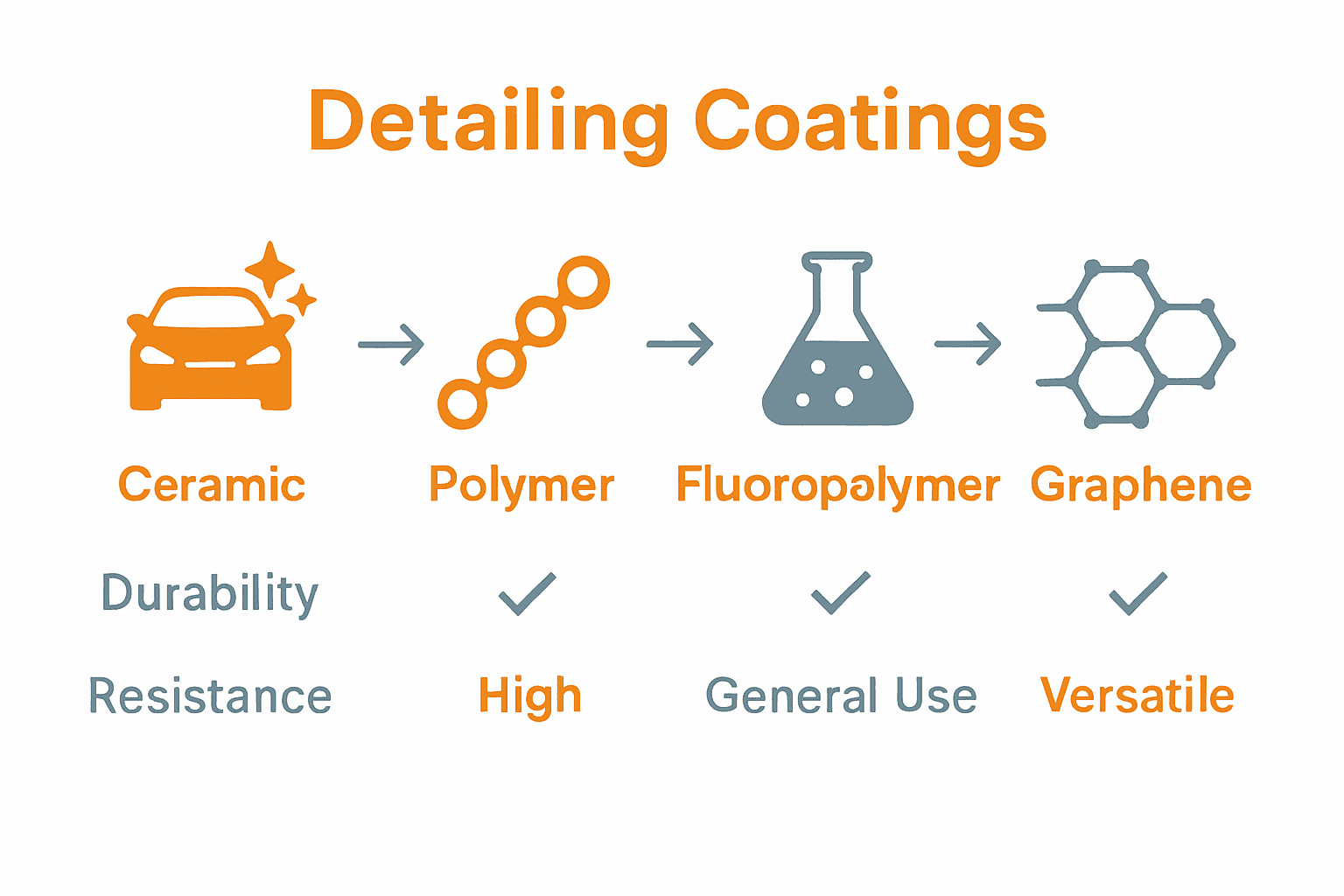
Do detailing coatings make surfaces scratch-proof?
No, detailing coatings do not make surfaces completely scratch-proof. While they offer a degree of protection against light abrasions, they cannot prevent more severe damage such as rock chips or deep scratches. Proper care and maintenance are essential to preserve their effectiveness.
Recommended
- What is Quick Detailer: Understanding Its Essentials – shinykingsinc
- What is Clear Coat? Understanding Its Importance and Use – shinykingsinc
- What is a Topcoat? Understanding Its Role and Importance – shinykingsinc
- Motorcycle Graphene Coating Ultra 10H+ Wash&Shine 66 DIY Coating – shinykingsinc
- Understanding What is Kitchen Spray Coating - WordPress


